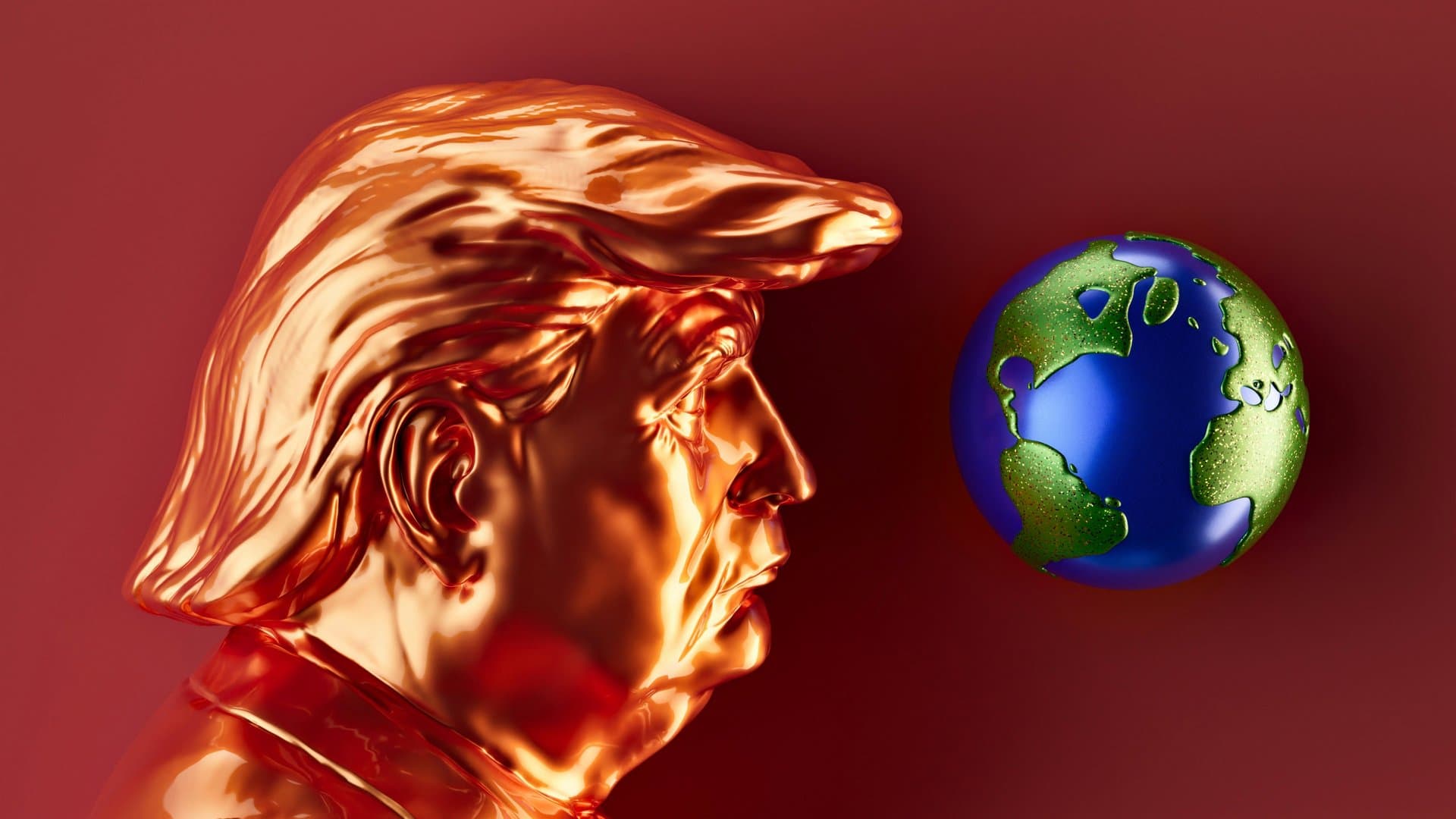US-China Trade Talks: Navigating Market Hopes and Realities
Exploring how the latest US-China trade talks and China’s stimulus efforts shape global markets, investor sentiment, and economic outlook amid ongoing tariff tensions and cautious optimism.

Key Takeaways
- US-China trade talks spark cautious market optimism amid tariff tensions
- China’s broad stimulus package seen as stopgap, not a market game-changer
- Tariffs remain sky-high, with talks unlikely to yield immediate grand deals
- Economic data signals China’s growth slowdown amid trade war pressures
- Investors brace for prolonged friction despite potential phased tariff rollbacks

The global financial stage is set for a pivotal weekend as U.S. and Chinese officials prepare to meet in Switzerland, stirring a mix of hope and skepticism across markets. After months of tit-for-tat tariffs that have throttled trade between the world’s two largest economies, investors are watching closely for signs of thawing tensions. Yet, the backdrop is complex: China’s recent stimulus efforts, including interest rate cuts and liquidity injections, have failed to ignite the stock market rally seen last year. Meanwhile, economic indicators reveal a slowdown in China’s manufacturing and services sectors, underscoring the weight of ongoing trade frictions. This article unpacks the nuances of the US-China trade talks, the impact of China’s stimulus measures, and what these developments mean for global markets and investors navigating this uncertain terrain.
Assessing Market Optimism
Markets have been riding a rollercoaster of emotions as US-China trade talks approach, with optimism flickering but skepticism firmly in place. Just weeks ago, whispers from the Trump administration hinted at easing tensions, lifting hopes for a thaw. Yet, the dollar’s climb to a one-month peak against the euro and the yen’s safe-haven rally reveal that investors are hedging bets, not throwing caution to the wind. China’s firm stance, with officials declaring they neither want nor fear a trade war, adds a layer of defiance that tempers enthusiasm. Stock markets tell a similar story: Japan’s Nikkei surged 1.5%, but Chinese bourses like Hong Kong’s Hang Seng dipped, reflecting uneven confidence. This patchwork reaction underscores a key truth — while the prospect of talks is welcome, the market’s pulse remains guarded, waiting for concrete outcomes rather than hopeful headlines.
The upcoming discussions in Switzerland are more than just a diplomatic dance; they are a litmus test for whether the tit-for-tat tariff battle can find an off-ramp. Investors are not expecting miracles but are keen on confirmation that the trade war won’t escalate further. The cautious optimism is reflected in the S&P 500’s modest gains, reversing a brief rally fade. Yet, the reality is that much of the good news is already baked into prices, with the real test lying in the details of any tariff rollbacks or agreements. This nuanced market mood serves as a reminder that in global trade, hope is a necessary fuel, but facts and follow-through drive the engine.
Evaluating China’s Stimulus Impact
China’s recent stimulus package arrived with fanfare but landed with a thud in investor circles. The People’s Bank of China cut key policy rates by 10 basis points and slashed banks’ reserve requirements by 50 basis points, aiming to inject liquidity and support sectors like technology and elderly care. Yet, unlike last September’s sweeping measures that sparked a 32% rally in the CSI 300 index over six days, this round barely nudged markets. The benchmark index inched up just 0.61% on announcement day, with Hong Kong’s Hang Seng gaining less than 0.4% over two days. Analysts point to a key reason: these measures are seen as stopgaps rather than solutions, lacking targeted fiscal policies to boost consumer sentiment or stabilize the real estate sector.
Economic data paints a sobering picture. China’s manufacturing PMI slipped to a 16-month low, dipping into contraction territory, while new export orders fell to their lowest since December 2022. Services activity also slowed, signaling broad economic strains. The stimulus, aligned with Politburo priorities, focuses on industrial and social needs rather than direct market support. This approach reflects Beijing’s cautious balancing act — providing relief without overcommitting amid external shocks like tariffs. For investors, the takeaway is clear: stimulus alone won’t reverse the tide without more precise measures addressing consumer confidence and real estate woes.
Understanding Tariff Dynamics
Tariffs remain the stubborn elephant in the room, with US levies on Chinese goods towering at 145%, effectively an embargo, and China retaliating with a 125% levy on US imports. These sky-high tariffs have throttled trade flows, with container shipments from China to the US plummeting from 71 vessels on April 21 to just 42 by month-end. The fallout extends beyond numbers — manufacturers have halted production, and employment in export-related sectors is shrinking, with Goldman Sachs estimating 16 million jobs tied to US-bound goods at risk. The recent revocation of the US 'de minimis' rule, which exempted low-value goods from tariffs, has further heightened labor market concerns, especially in apparel and consumer electronics.
Against this backdrop, the US administration’s mixed signals add to market uncertainty. While President Trump hinted at tariff reductions to 60% in coming weeks, he also dismissed speculation about slashing tariffs by more than half. Treasury Secretary Scott Bessent emphasized that the president holds the final say on trade agreements, underscoring the unpredictable nature of negotiations. This complex dance keeps investors wary, as the tariff landscape remains a volatile chessboard where moves are strategic and outcomes uncertain.
Navigating Trade Talk Realities
The scheduled weekend talks between US Treasury Secretary Scott Bessent and China’s Vice Premier He Lifeng represent a critical juncture but are widely viewed as a starting point rather than a breakthrough. Analysts caution that meaningful progress will require more than a few hours of discussion, with the gap between the two countries’ positions still wide. The talks are expected to set the stage for higher-level engagement, possibly a call between Presidents Trump and Xi Jinping, aimed at pausing escalation rather than sealing a comprehensive deal.
Investor expectations are tempered by the White House’s erratic messaging and the complexity of issues on the table, including potential US purchases of TikTok, fentanyl flow controls, and tariff exemptions. The history of drawn-out negotiations, like the three-year India-UK trade talks, serves as a reminder that patience is a virtue in global trade diplomacy. While a phased rollback of tariffs to around 45-60% is on the table, a grand compromise akin to the Phase One deal seems unlikely soon. This reality check encourages investors to view the talks as a cautious step toward stability rather than a quick fix.
Preparing for Prolonged Friction
Even if the US-China trade talks yield some tariff relief, the broader trajectory points toward sustained economic friction and strategic decoupling. China accounts for about 7% of S&P 500 revenue directly, but US companies earned $1.2 trillion selling to Chinese consumers over the past year — a figure quadruple the trade deficit. A complete decoupling would slash earnings for many US firms, signaling deeper market impacts beyond tariffs alone.
Investors face a landscape where trade tensions, stimulus stopgaps, and economic slowdowns intertwine. The cautious optimism surrounding talks is tempered by the reality that both sides have entrenched priorities and red lines. For market participants, this means embracing a long game mindset, balancing hope for de-escalation with preparedness for ongoing volatility. The evolving US-China relationship will continue to shape global markets, demanding vigilance, adaptability, and a keen eye on both policy moves and economic data.
Long Story Short
As the dust settles on the weekend’s US-China trade talks, the reality is clear: while dialogue signals a willingness to engage, the path to meaningful tariff reductions and comprehensive agreements remains steep and winding. China’s stimulus package, though broad, acts more as a bandage than a cure, addressing immediate economic strains without sparking investor euphoria. The persistent high tariffs continue to cast long shadows over trade flows, employment, and corporate earnings, especially in sectors tied to cross-border commerce. For investors, this means tempering expectations and preparing for a marathon, not a sprint, in resolving trade tensions. The relief of a modest tariff rollback or a pause in escalation could offer short-term calm, but the broader narrative points to a prolonged period of adjustment and strategic recalibration. Staying informed, flexible, and cautious will be key to navigating the evolving US-China economic relationship and its ripple effects across global markets.